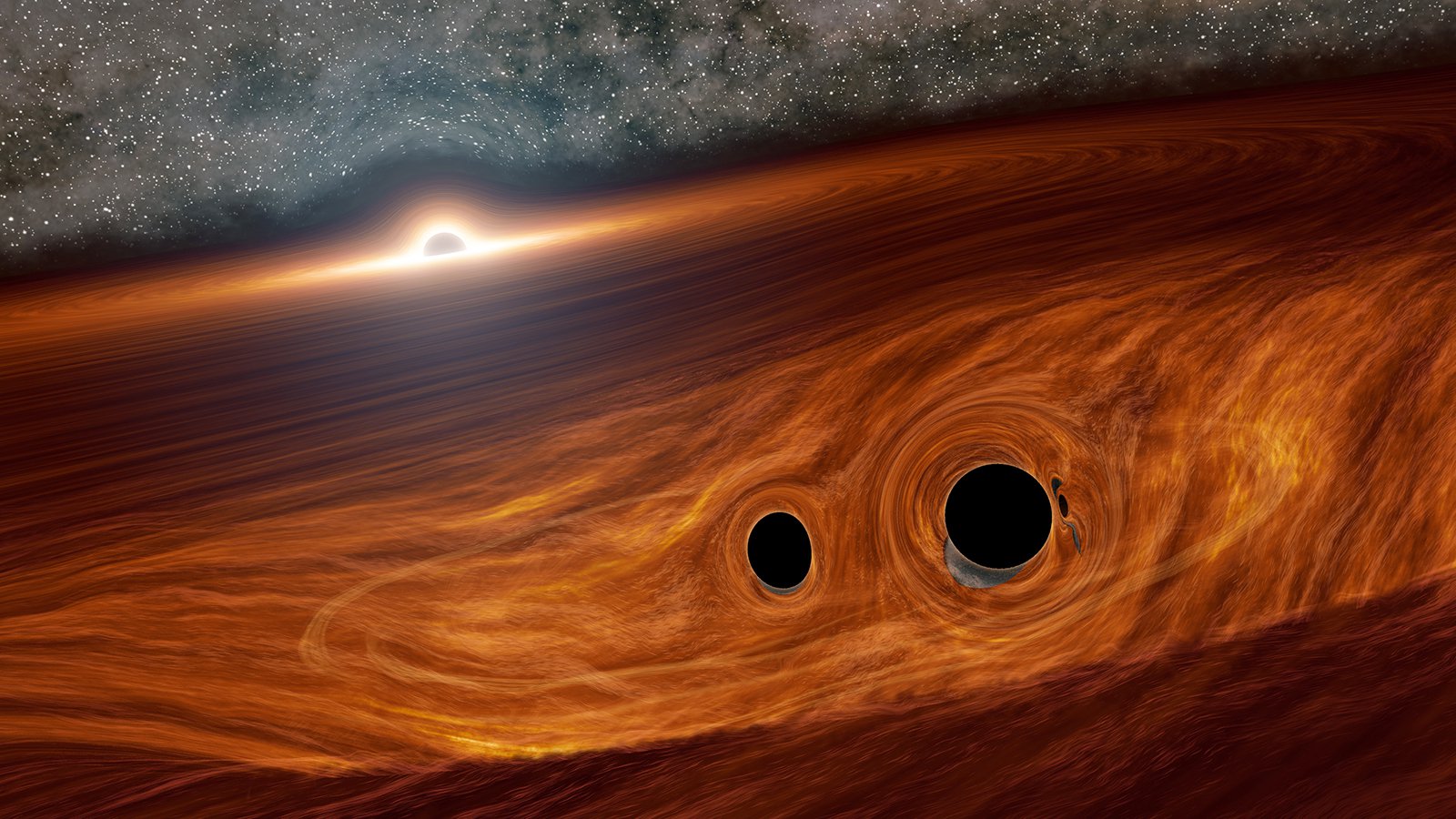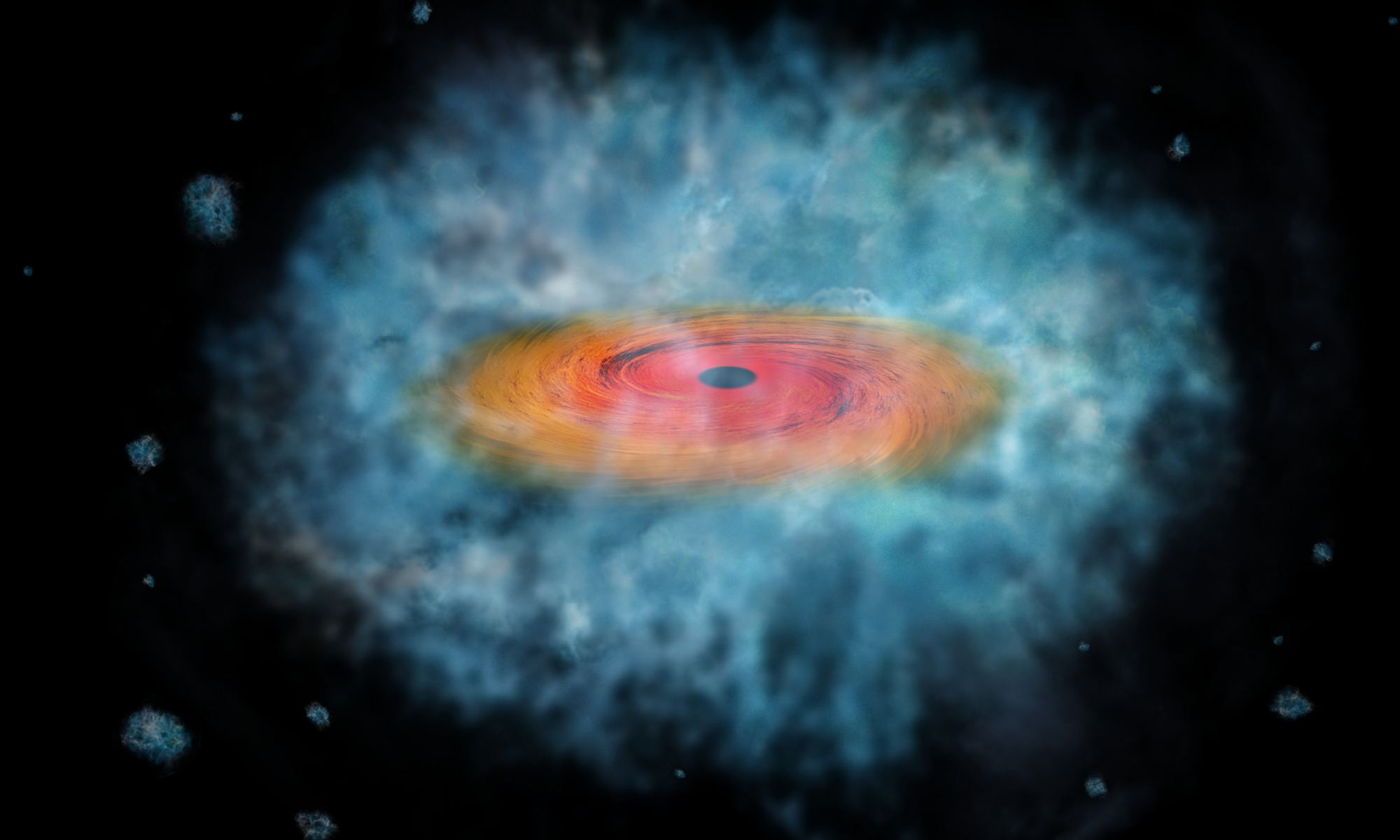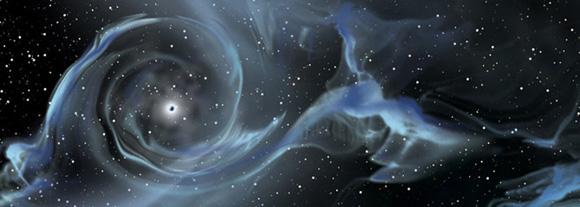Primordial Black Holes (PBHs) have recently received much attention in the physics community. One of the primary reasons is the potential link to dark matter. In effect, if PBHs can be proven to exist, there’s a very good chance that they are what dark matter, the invisible thing that makes up 85% of the universe’s mass, is made of. If proven, that would surely be a Nobel-level discovery in astrophysics.
Continue reading “Some Clever Ways to Search for Primordial Black Holes”Roman Space Telescope Will Be Hunting For Primordial Black Holes

When astrophysicists observe the cosmos, they see different types of black holes. They range from gargantuan supermassive black holes with billions of solar masses to difficult-to-find intermediate-mass black holes (IMBHs) all the way down to smaller stellar-mass black holes.
But there may be another class of these objects: primordial black holes (PBHs) that formed in the very early Universe. If they exist, the Nancy Grace Roman Space Telescope should be able to spot them.
Continue reading “Roman Space Telescope Will Be Hunting For Primordial Black Holes”The Universe Could Be Filled With Ultralight Black Holes That Can't Die

It’s that time again! Time for another model that will finally solve the mystery of dark matter. Or not, but it’s worth a shot. Until we directly detect dark matter particles, or until some model conclusively removes dark matter from our astrophysical toolkit the best we can do is continue looking for solutions. This new work takes a look at that old theoretical chestnut, primordial black holes, but it has a few interesting twists.
Continue reading “The Universe Could Be Filled With Ultralight Black Holes That Can't Die”Could There Be a Black Hole Inside the Sun?
It’s a classic tale of apocalyptic fiction. The Sun, our precious source of heat and light, collapses into a black hole. Or perhaps a stray black hole comes along and swallows it up. The End is Nigh! If a stellar-mass black hole swallowed our Sun, then we’d only have about 8 minutes before, as the kids say, it gets real. But suppose the Sun swallowed a small primordial black hole? Then things get interesting, and that’s definitely worth a paper on the arXiv.
Continue reading “Could There Be a Black Hole Inside the Sun?”If We Could Find Them, Primordial Black Holes Would Explain a Lot About the Universe

There are three known types of black holes in the Universe: supermassive black holes that lurk in the centers of galaxies, stellar-mass black holes that are the remnants of massive stars, and intermediate-mass black holes that can be found in dense clusters of stars. But there is a fourth, hypothetical type of black hole known as primordial black holes (PBHs). If they exist, they could solve a few cosmological mysteries.
Continue reading “If We Could Find Them, Primordial Black Holes Would Explain a Lot About the Universe”Roman Could Finally Tell Us if Primordial Black Holes Exist

When the Universe erupted into existence with the Big Bang, all of its matter was compressed into a tiny area. Cosmologists theorize that in some regions, subatomic matter may have been so tightly packed that matter collapsed into primordial black holes. If these primordial black holes exist, they’re small, and they could be hiding among the population of free-floating planets.
Continue reading “Roman Could Finally Tell Us if Primordial Black Holes Exist”Primordial Black Holes May Have “Frozen” the Early Universe

Primordial holes formed in the exotic conditions of the big bang may have become their own source of matter and radiation.
Continue reading “Primordial Black Holes May Have “Frozen” the Early Universe”A New Way to Produce Primordial Black Holes in the Early Universe
Did Supermassive Black Holes Collapse Directly out of Giant Clouds of gas? It Could Depend on Magnetic Fields

Roughly half a century ago, astronomers realized that the powerful radio source coming from the center of our galaxy (Sagittarius A*) was a “monster” black hole. Since then, they have found that supermassive black holes (SMBHs) reside at the center of most massive galaxies. This leads to what is known as Active Galactic Nuclei (AGN) or quasars, where the central region of a galaxy is so energetic that it outshines all of the stars in its galactic disk. In all that time, astronomers have puzzled over how these behemoths (which play a crucial role in galactic evolution) originated.
Astronomers suspect that the seeds that formed SMBHs were created from giant clouds of dust that collapsed without first becoming stars – aka. Direct Collapse Black Holes (DCBHs). However, the role of magnetic fields in the formation of DCBHs has remained unclear since none of the previous studies have been able to simulate the full accretion periods. To investigate this, an international team of astronomers ran a series of 3D cosmological magneto-hydrodynamic (MHD) simulations that accounted for DCBH formation and showed that magnetic fields grow with the accretion disks and stabilize them over time.
Continue reading “Did Supermassive Black Holes Collapse Directly out of Giant Clouds of gas? It Could Depend on Magnetic Fields”Primordial Black Holes Could Have Triggered the Formation of Supermassive Black Holes
The early moments of the universe were turbulent and filled with hot and dense matter. Fluctuations in the early universe could have been great enough that stellar-mass pockets of matter collapsed under their own weight to create primordial black holes. Although we’ve never detected these small black holes, they could have played a vital role in cosmic evolution, perhaps growing into the supermassive black holes we see today. A new study shows how this could work, but also finds the process is complicated.
Continue reading “Primordial Black Holes Could Have Triggered the Formation of Supermassive Black Holes”



